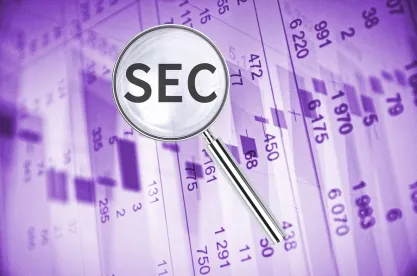In our last post, we discussed some of the constitutional challenges to the Securities and Exchange Commssion’s (SEC) in-house tribunal. Though these challenges have thus far been unsuccessful, they appear to have prompted the SEC to amend some of its rules of practice to address at least some of the criticisms leveled against its administrative proceedings.
One persistent criticism has been that the length of time from initiation of administrative proceedings through hearing is substantially too short. Previously, an ALJ’s initial decision had to be filed no more than 300 days from the service of the order instituting proceedings. However, the SEC has now increased the time between its initial filing in an enforcement action and the hearing (at least in “appropriate” cases). The new rules now allow for the hearing to be scheduled up to 10 months from the date of service and allow for the initial decision to be filed up to 120 days after the completion of any post-hearing briefing. This means that the overall timeline has been extended by potentially three to six months.
The rules also now allow for at least a limited number of depositions. Previously, discovery in SEC administrative proceedings was largely limited to reviewing the SEC’s case file which, not surprisingly, did not always contain evidence helpful to a respondent’s view of the case. The number of depositions varies with the number of respondents. Single respondent cases can have up to three depositions while multi-respondent cases can have up to seven.
Another concern has been that hearsay evidence is generally admissible in in-house proceedings. Critics have long advocated for the use of the Federal Rules of Evidence when dealing with the admission of hearsay. The most recent amendments now exclude “unreliable” evidence but still allow the admission of hearsay evidence provided it is relevant, material and reliable.
These reforms, while useful, remain largely incremental and do not diminish substantially the real or perceived differences litigants face when defending themselves on the SEC’s home court rather than in federal court. As a result, defendants will likely continue to challenge the propriety of the SEC’s in-house forum until the Supreme Court resolves this issue once and for all.




 />i
/>i

